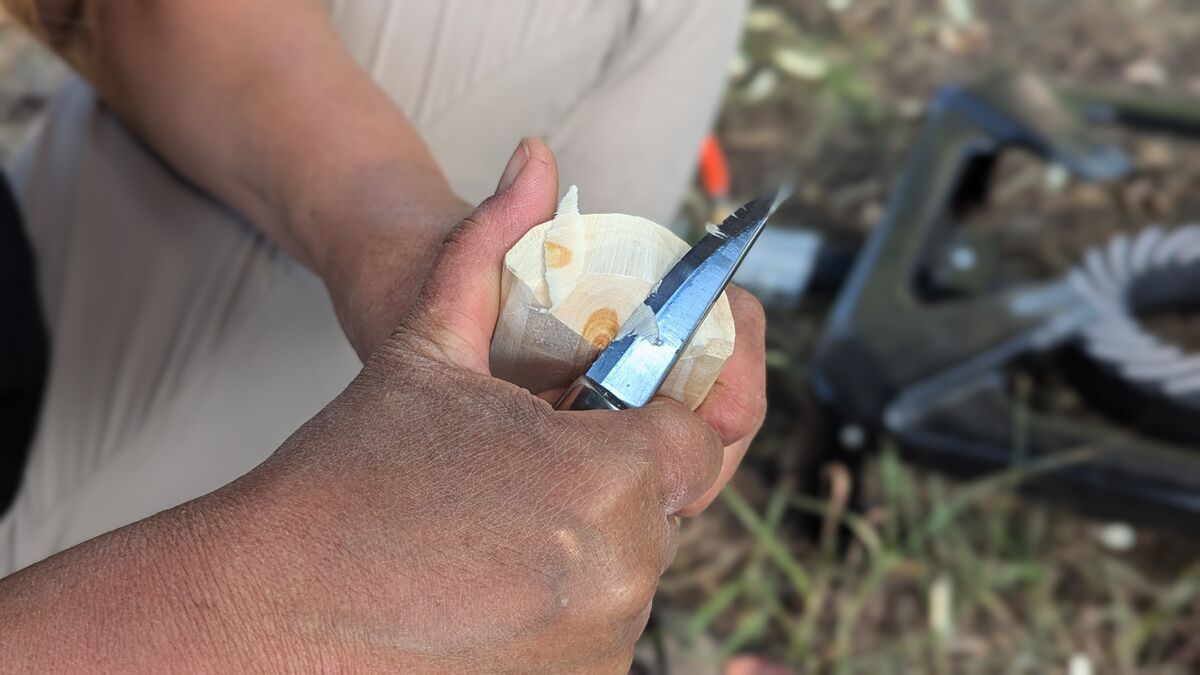
Which wood for carving ? – The best types of wood and their properties
👉 The key facts from this guide
- Softwood species such as lime, poplar, and willow are ideal for beginners, as they are easy to work with and forgive mistakes.
- The right choice of wood is crucial for success and influences the processing and the result when carving.
- Important characteristics of ideal carving wood are softness, elasticity, and durability.
- The wood structure and grain play an essential role in the workability and the visual appearance of the carving.
- Important safety rules when carving include carving away from the body, using sharp tools, and wearing cut-resistant gloves.
- With increasing experience, one can move on to harder types of wood
I was full of anticipation when I took my first carving knife. I wanted to make a small pig out of wood.
But after hours of work, my wooden animal looked good, but I had blisters on my fingers. And I wondered why it took so long and was so hard?
I didn't know back then which wood was best suited for beginners.
And today, as a wilderness mentor, I regularly receive the question, which wood is best for carving for beginners?
My answer:
Soft woods, such as lime, poplar, and willow, are perfect for beginners. They are easy to work with and forgive small mistakes. This makes learning carving techniques less frustrating.
In this guide, I share my experiences with different types of wood. I show which types of wood are suitable for beginners.
Let's now discover the world of wood carving and find the best types of wood for your first projects.
Why choosing the right wood is crucial
10 years ago, I started carving and quickly realized how important the right wood selection is.
Fact is: The choice of wood is crucial for your success. It is one of the fundamental basics of the carving craft.
The appropriate choice of wood affects the processing and the result.
Different types of wood have different properties. These influence how easy or difficult carving is.
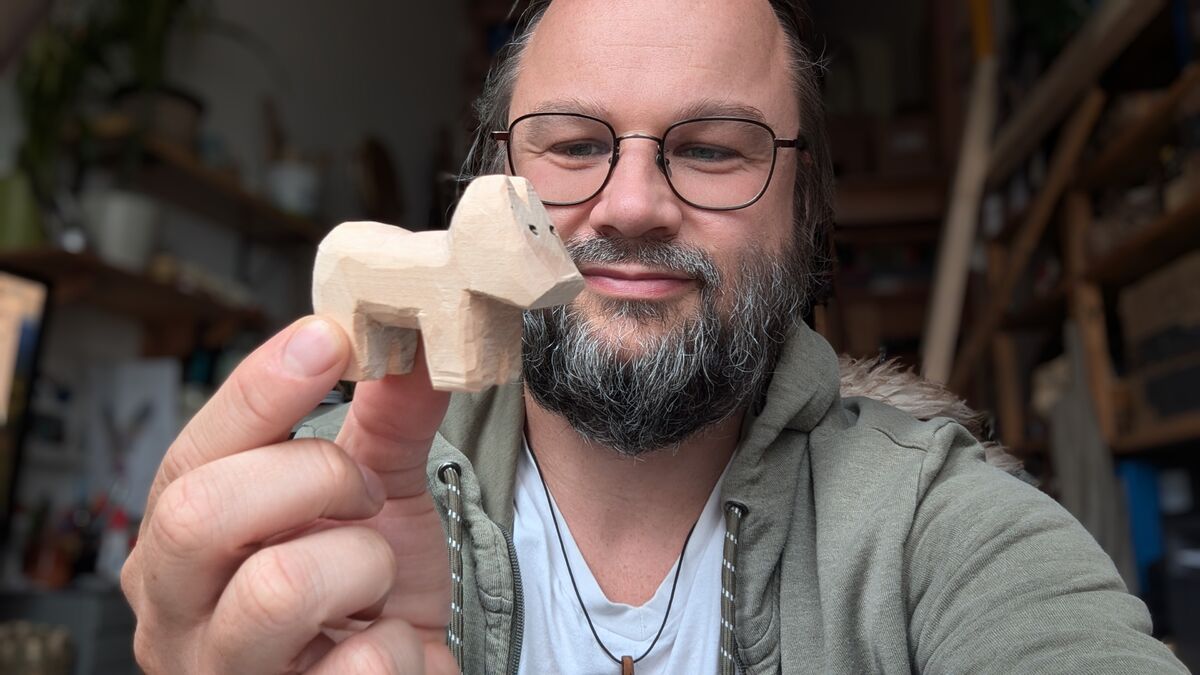
The three key properties of ideal carving wood: Softness, Elasticity, and Durability
A good carving wood is soft, elastic, and durable. When choosing, I pay attention to these characteristics:
- Softness: Facilitates processing
- Elasticity: Prevents splinters and cracks during processing
- Durability: Guarantees the longevity of your work
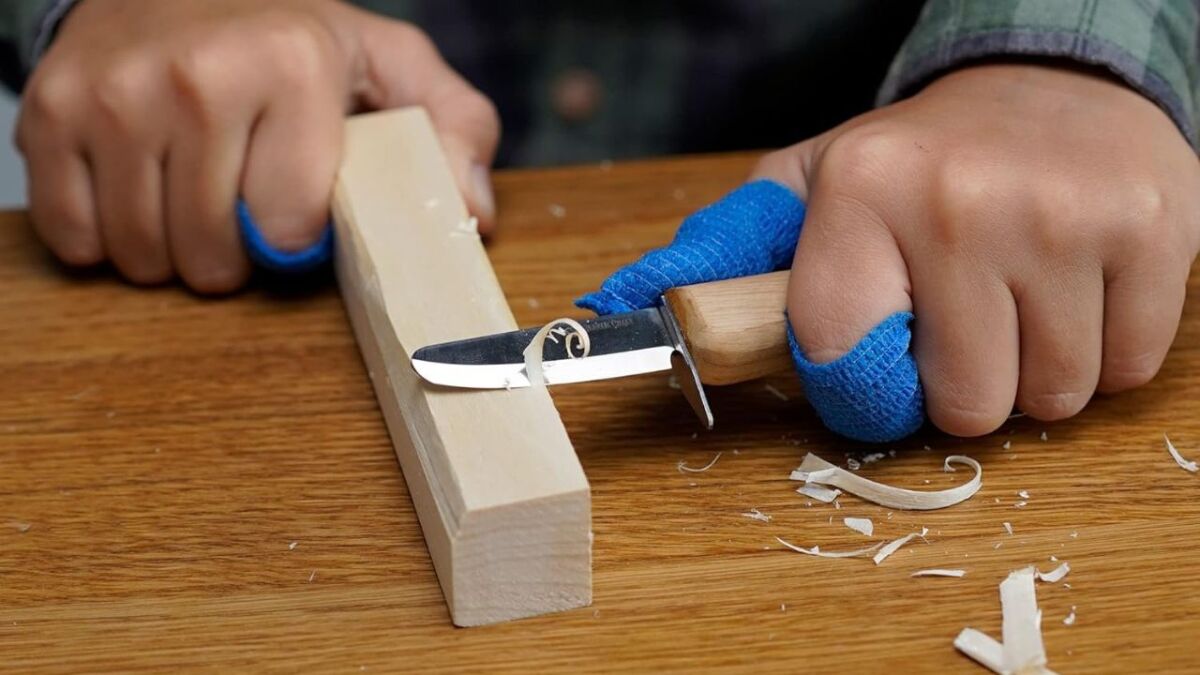
How Wood Structure and Grain Affect Your Carving Results
The structure and grain of the wood play a crucial role in carving. They influence both the workability of the material and the aesthetic appearance of the finished piece.
Here is a detailed look at the key factors:
| Factor | Influence on Carving | Details |
|---|---|---|
| Tree Growth Rate | Affects hardness and density | - Slow growth: harder wood, more difficult to work with, finer details possible - Fast growth: softer wood, easier to work with, less detailed |
| Wood Drying Method | Affects stability | - Natural air drying: more stable, less tension - Artificial drying: faster, but higher risk of cracking |
| Wood Grain | Determines carving direction and appearance | - Straight grain: easier to work with, clear appearance - Wavy grain: more difficult to carve, interesting visual effects |
| Type of Wood | Affects workability and outcome | - Softwood (e.g., lime): easy to work with - Hardwood (e.g., oak): requires more effort, allows finer details |
| Moisture Content | Affects workability and stability | - Too dry: brittle, splinters easily - Too moist: difficult to work with, may warp later |
| Age of Wood | Affects stability and hardness | - Older wood: more stable, often harder - Younger wood: softer, possibly less predictable |
| Knots and Irregularities | Challenges and creative opportunities | - Can be difficult to work with - Offer opportunities for unique designs |
I know, this looks like a lot of information at first, but believe me, it will become second nature to you.
If you consider these factors while carving, you will definitely have more fun doing it.
Choose your wood carefully to achieve the desired results and avoid frustrations.
Top 3 Softwoods for Beginners: Linden, Poplar, and Willow Compared
If I were to start carving again, I would look for soft wood. They are perfect for starting carving easily and quickly. They are easy to work with and forgive small mistakes.
Here are the best softwoods for beginners.
Linden wood: The classic among carving woods
Linden wood is my favorite. It is soft, elastic, and durable. Large figures or spoons turn out great with it. Additionally, it darkens over time and acquires a warm color.
I remember a project from about 5 years ago when I carved the face of a forest spirit out of lime wood. The soft texture of the wood allowed me to work out fine details like wrinkles in the face without constantly having to sharpen my tools.
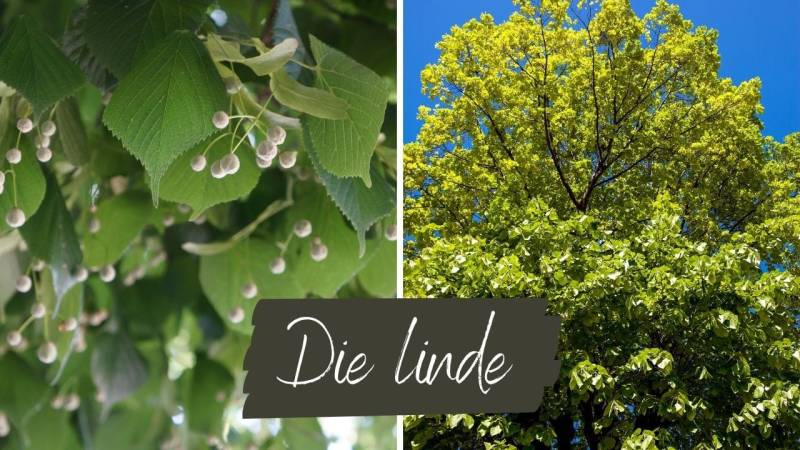
Poplar wood: Easy to work with and versatile
Poplar wood is easy to work with. It is light, tear-resistant, and flexible. I enjoy painting it because it takes colors well. It is less suitable for intricate details.
Last summer, I led a workshop for children where we carved butter knives from poplar wood. The children were thrilled at how easy the wood was to shape, and I was amazed at how well even the small hands managed it.
At the end of the day, we had an entire cutlery box filled with wooden knives, and the beaming faces of the children once again showed me why poplar wood is ideal for beginners.
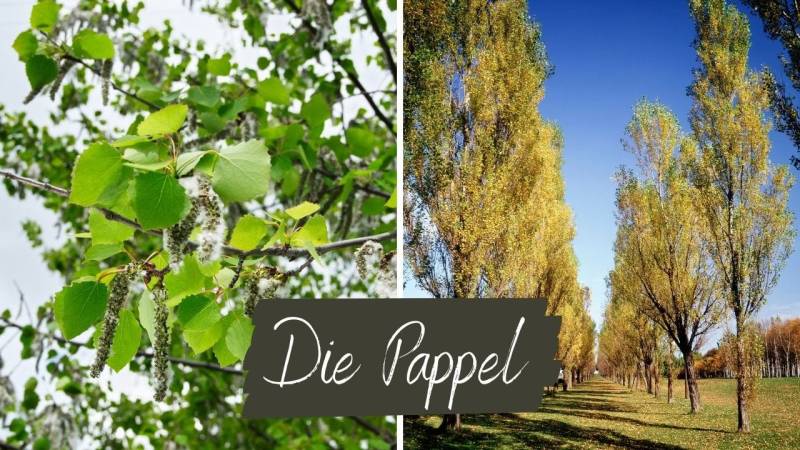
Willow wood: Aromatic and easy to carve
Willow wood surprises me again and again. It has a pleasant scent and is easy to work with. It is ideal for small figures or cutlery.

Summary:
| Type of Wood | Properties | Special Features |
|---|---|---|
| Linden Wood | Soft, elastic, durable | Darkens over time, good for large figures |
| Poplar Wood | Light, tear-resistant, flexible | Good for painting, less suitable for details |
| Willow Wood | Aromatic, easy to work with | Ideal for small figures and reliefs |
Advantages and Disadvantages of Softwoods
Each of the mentioned types of wood has its advantages and disadvantages. Here is a comparison:
| Type of Wood | Advantages | Disadvantages |
|---|---|---|
| Linden | Soft, uniform structure | Less stable, yellows |
| Poplar | Very light, easy to find, inexpensive | Coarse-grained, splinters easily |
| Willow | Flexible, interesting grain | Uneven density |
In addition to these three softwoods, I also use chestnut and pine. They are easy to work with and enhance my creativity.
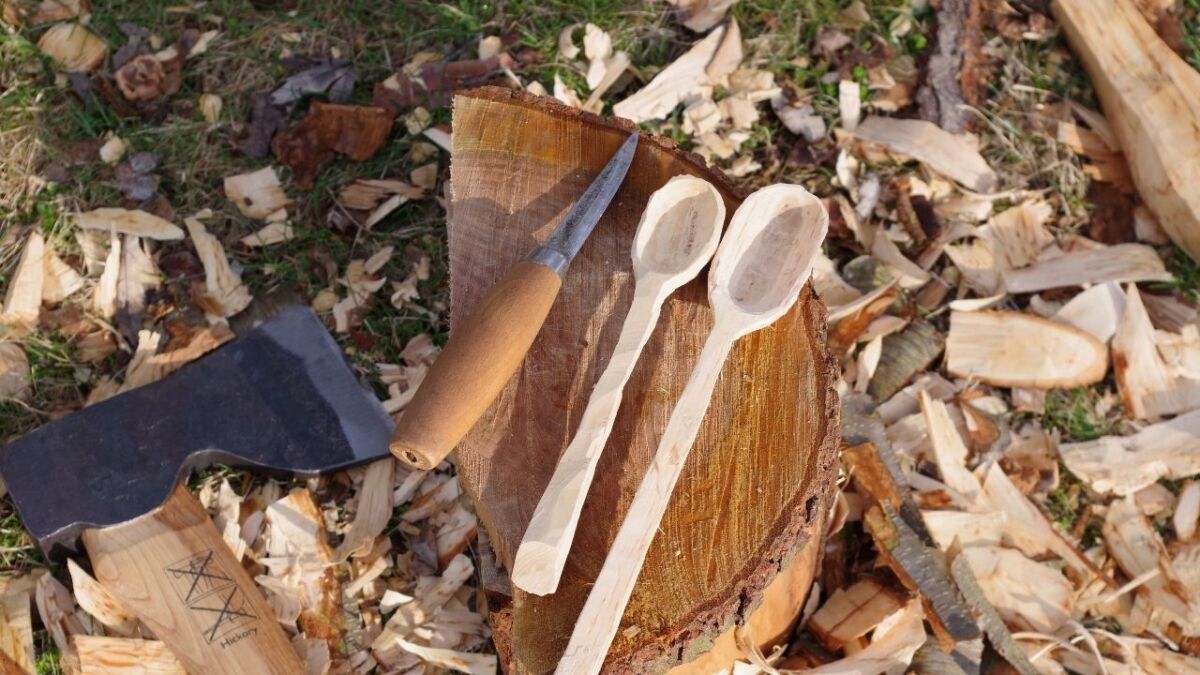
The Next Step: Medium-Hard Woods for Ambitious Beginners and Their Characteristics
After some time, I then worked with medium-hard woods. These are ideal for detailed work. Maple, birch, and beech are my favorites.
Maple has a creamy white color and is great for carving. It is perfect for intricate patterns. Birch has a uniform grain that I like. But it is somewhat more brittle, which requires caution.
Beech wood is my favorite - but indeed very hard. Its fine structure allows me to achieve precise details without the wood breaking away quickly.
Carving medium-hard woods requires strength and control. But the results are worth it.
| Type of Wood | Properties | Difficulty Level |
|---|---|---|
| Maple | Cream white, easy to work with | Medium |
| Birch | Even grain, more brittle | Medium to hard |
| Beech | Fine-grained, detailed | Hard |
For experienced carvers, these types of wood offer new creative possibilities. Each wood has its characteristics, and with practice, you too will master carving medium-hard woods and surely create great works of art.
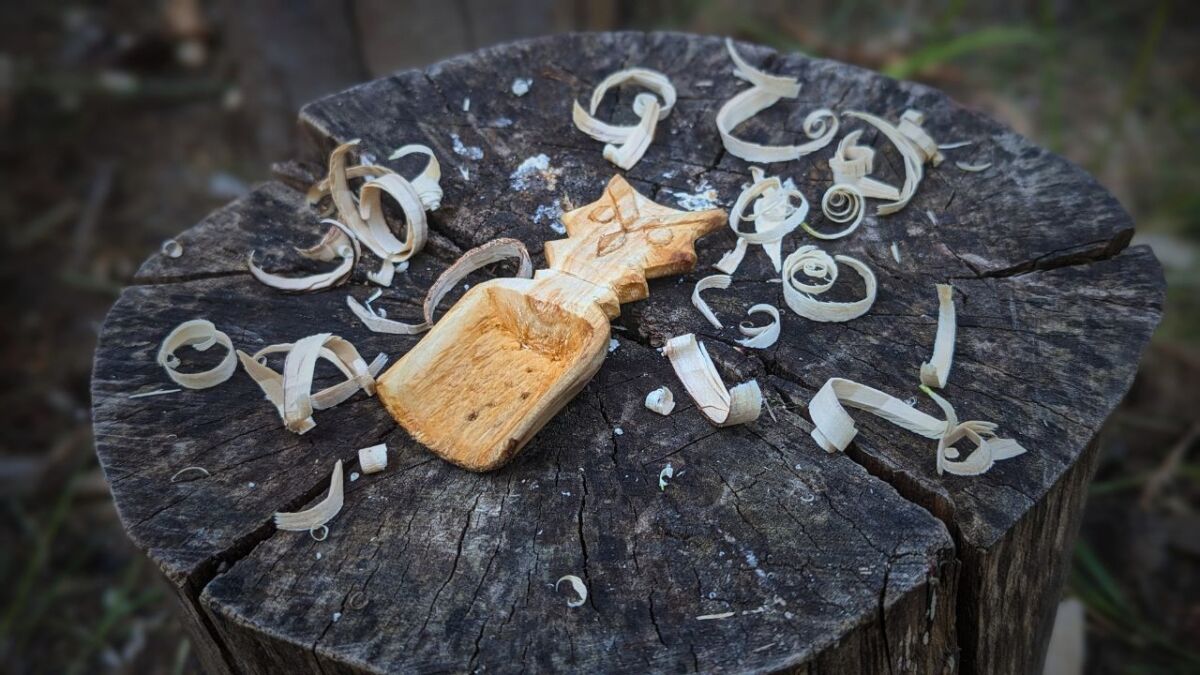
From Soft to Hard: Comprehensive Overview and Evaluation of 16 Carving Woods
To give you a complete overview, I have created a large list for you of the best wood for carving.
The types of wood are roughly sorted by their hardness, from soft to very hard. Note that the boundaries between soft, medium, and hard can be fluid and may vary slightly depending on the source.
This overview should give you a good insight into different types of wood and their suitability for carving.
| Wood Type | Hardness | Carving Properties | Special Features |
|---|---|---|---|
| Linden | Soft | Very good, ideal for beginners | Light wood, fine texture |
| Poplar | Soft | Very good, easy to work with | Tear-resistant, flexible |
| Willow | Soft | Very good, easy to work with | Aromatic, ideal for small figures |
| Swiss Pine | Soft | Good, easy to work with | Aromatic scent, many knots |
| Chestnut | Soft to medium | Good to work with | Weather-resistant, good teak substitute |
| Birch | Medium | Good, can break easily | Beautiful, even grain |
| Maple | Medium to hard | Good, slightly harder than linden | Creamy white color, suitable for fine details |
| Beech | Hard | Harder to work with | Fine structure, allows precise details |
| Oak | Hard | Hard to work with, for experienced | Robust, weather-resistant (heartwood) |
| Elm | Hard | Tough, difficult to split | Vivid grain, popular with chainsaw carvers |
| Ash | Hard | Good to work with | Pronounced grain |
| Larch | Hard | Harder to work with | Weather-resistant |
| Yew | Hard | Good to work with, elastic | Beautiful natural patterns, quick-drying |
| Olive | Hard | Good to work with | Decorative grain, does not swell on water contact |
| Pear | Hard | Good to work with | Even grain |
| Almond | Very hard | Hard to work with | Often twisted growth, for experienced carvers |
Why hard woods are not suitable for beginners – but still work
As already mentioned, it is much easier to perform carvings with soft wood.
But why is that so?
Hardwoods have a higher density (mass in relation to volume, g/cm³) than softwoods. This means that the ratio of cell wall substance to the cavities in the wood is higher in hardwoods.
- Hard wood: Lots of cell wall substance, few cavities
- Soft wood: Little cell wall substance, many cavities
This means: Less cell wall substance, less material, easier to carve.
Here is a graphic for illustration:
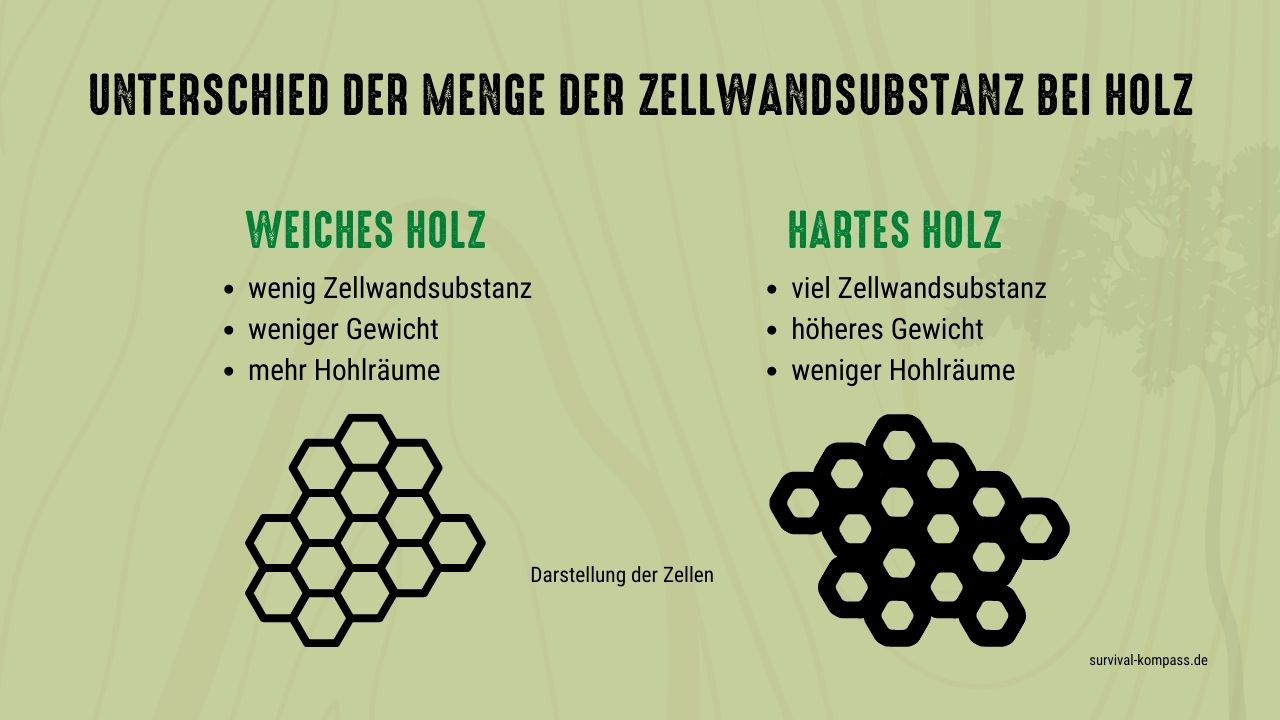
The right tool for every wood: Recommendations and adjustment tips
As a beginner in wood carving, it is advisable to know the appropriate tools and techniques. I would like to give you an overview of how you can work safely and effectively with different types of wood.
Basic Carving Tools for Beginners
To start, you don't need many carving tools. A sharp carving knife is enough to get started. Keep in mind: A large knife makes large cuts. A small and thin knife makes finer cuts.
Here is my recommendation for an all-purpose carving knife that has a great price-performance ratio.
All-purpose carving knife
My recommendation: Morakniv Companion
This knife is ideal for beginners, especially with soft to medium-hard woods like linden or poplar. Its robust stainless-steel blade retains its sharpness for a long time, which is important with these woods, as they can dull the blade despite their softness.
Why it is suitable:
- The approximately 10 cm long blade offers enough control for details, but is also strong enough for rough work.
- The ergonomic handle fits perfectly in the hand, preventing fatigue during longer carving sessions.
-
The sharpness of the knife glides easily through soft woods without tearing.
My detailed review of the knife can be found here: Morakniv Companion Review
Safety Knife for Children and Beginners
My recommendation: Hultafors Safety Knife SKR, 380090
And if you have children who want to start carving, then buy them a regular knife and keep hands off Opinel.
This knife is perfect for children from 6 years old and cautious adults. It is excellent for soft woods like lime and willow.
Why it is suitable:
- The rounded tip minimizes the risk of injury.
- The shorter blade offers more control, ideal for smaller hands.
- Despite safety features, it is sharp enough to carve effectively.
I have extensively tested the Hultafors Safety Knife SKR, 380090 and for the price, the knife is unbeatable. Sharp, edge-retentive, safer due to the rounded tip, and also lightweight - perfect for all carving beginners and even for children.
Carving knife for fine details
My recommendation: Morakniv Wood Carving 120
If you venture into finer details and harder woods like maple or birch, this knife is ideal.
Why it is suitable:
- The thin, pointed blade allows for precise cuts and fine details.
- The short blade heel prevents you from cutting too deep - perfect for surface details.
- The blade retains its sharpness even with harder woods.
Peeling Knife for Spoons and Bowls
My recommendation: Frost/Morakniv Carving Knife No. 164S
Why it is suitable:
- The curved blade makes it easier to hollow out concave surfaces.
- The handle provides good leverage for controlled, powerful cuts.
- The sturdy construction is also suitable for harder woods.
Adapting Carving Technique to the Type of Wood
Each type of wood requires an adapted carving technique. Soft woods like lime are easy to work with. For hard woods, you should work more precisely and with more force.
Practice various carving techniques to get a feel for the material.
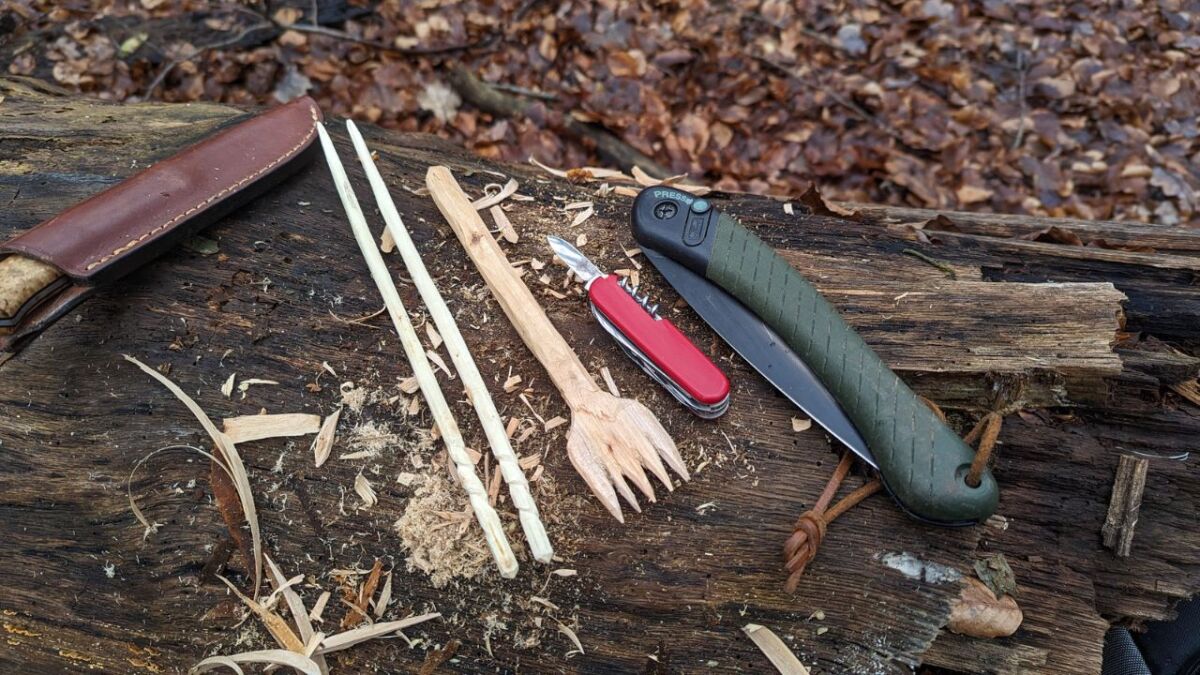
Safe Carving: 12 Essential Rules for Beginners of All Ages
The art of carving is a wonderful way to foster creativity and establish a connection to nature.
However, the safe handling of carving knives is of utmost importance, especially when children are learning this skill. Here you will find a guide to carving safety:
Basic Safety Rules
- Carve away from your body: Always carve away from yourself to minimize your risk of injury.
- Use sharp tools: Surprisingly, sharp knives are safer. You need less force and cut more precisely.
- Wear cut-resistant gloves: They provide you with additional protection, especially if you are a beginner.
- Maintain your tools regularly: Well-maintained tools are safer and more effective for you.
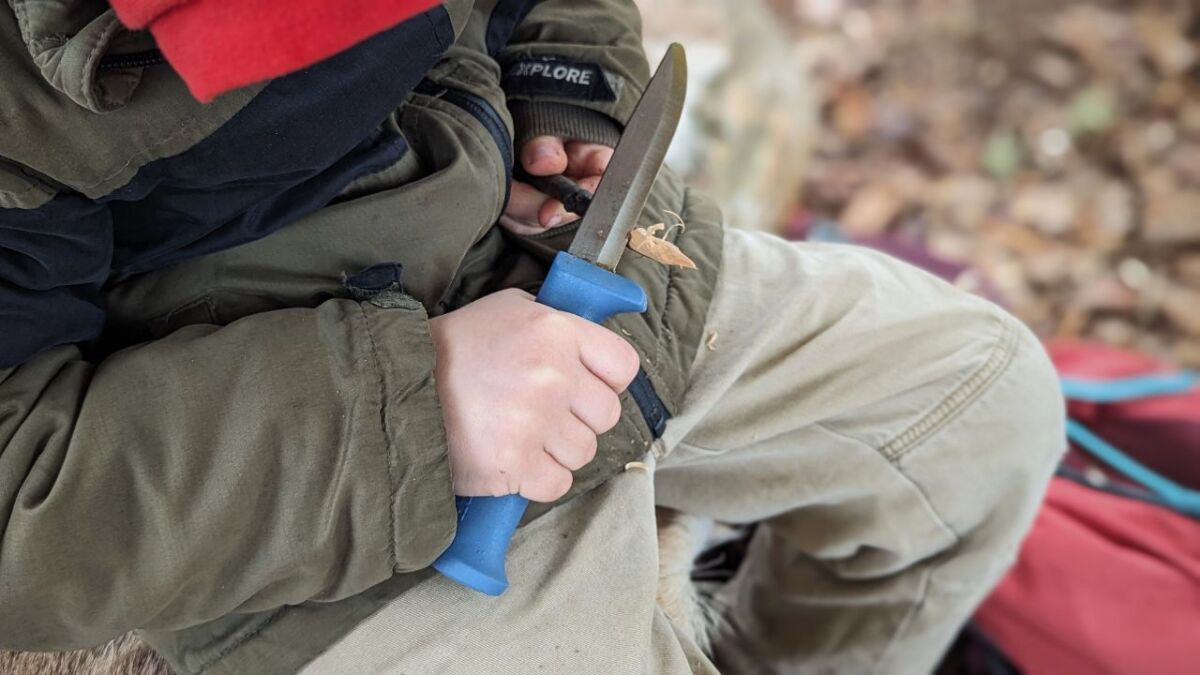
Advanced Safety Measures for Carving
- The knife belongs in the sheath: As soon as you or your child stop carving, immediately store the knife safely as the first step (!).
- Observe the "blood circle": Define a safety area around the person carving. No one should enter this area. Secure the knife during interruptions.
- Pay attention to proper seating and distance: Always carve while sitting for more stability. Keep a sufficient distance from other people.
- Use the two-hand technique: Guide the knife with one hand and hold the wood with the other. This increases your control and safety.
- Be aware of your surroundings: Choose a quiet, secluded place for carving. Do not carve near paths or passageways.
- Choose the right material: Use soft wood for beginners. This reduces the required force and the risk of injury.
- Pay attention to timing and your condition: Do not carve when you are tired or in poor lighting conditions.
- After carving: Clean and oil the knife after use. Store it safely and out of reach of children.
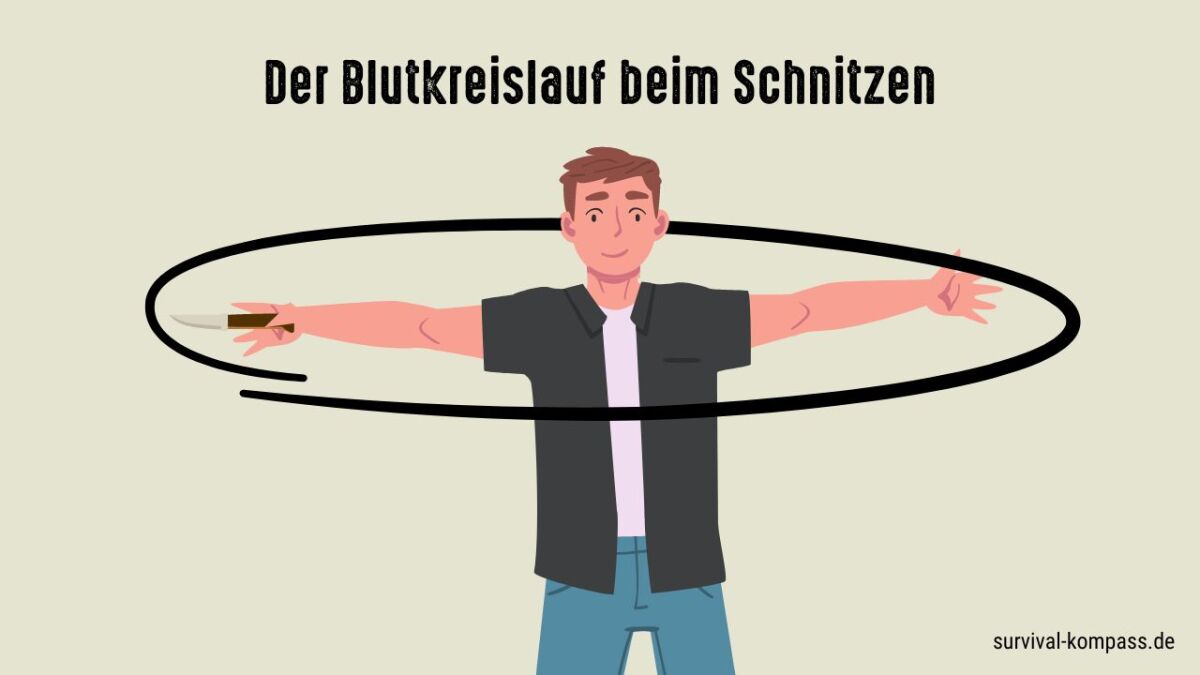
First Aid for Carvers: What to Do in Case of Cuts?
- Keep a first aid kit ready: Always have a well-stocked first aid kit within reach.
- Treat minor cuts: Clean, disinfect, and bandage the wound.
- Use it as a learning moment: View each injury as an opportunity to review and improve your safety measures.
I recommend my guide "Bushcraft First Aid Kit: assemble and apply" and my tool: Assemble and print a first aid kit.
Additional Tips for Children
- Use age-appropriate tools: Use carving knives specifically designed for children with safety features. I have a very helpful guide on this: The 5 Best Carving Knives for Children + Carving Guide for Parents
- Take regular breaks: Encourage regular breaks to avoid fatigue and inattentiveness.
- Give positive reinforcement: Praise safe behavior and the correct application of safety rules.
By consistently applying these safety guidelines, you can create a safe and positive carving environment. This allows you and your children to enjoy and master this wonderful craft.
Carving Ideas: 7 Beginner Projects for Adults
-
Spoon: Practical for everyday use, helps in learning basic carving techniques
-
Spatula: Useful in the kitchen, simple shape for practice
-
Wooden Figures: Encourages creativity, diverse design possibilities
-
Branch Hooks: Useful for outdoor activities, simple, functional shape
-
Pegs: Practical for camping, practices precise work
-
Spear: For outdoor enthusiasts and bushcrafters, teaches working with longer pieces of wood
-
Cooking Tools: Versatile (e.g., spatulas, cooking spoons), combination of function and form
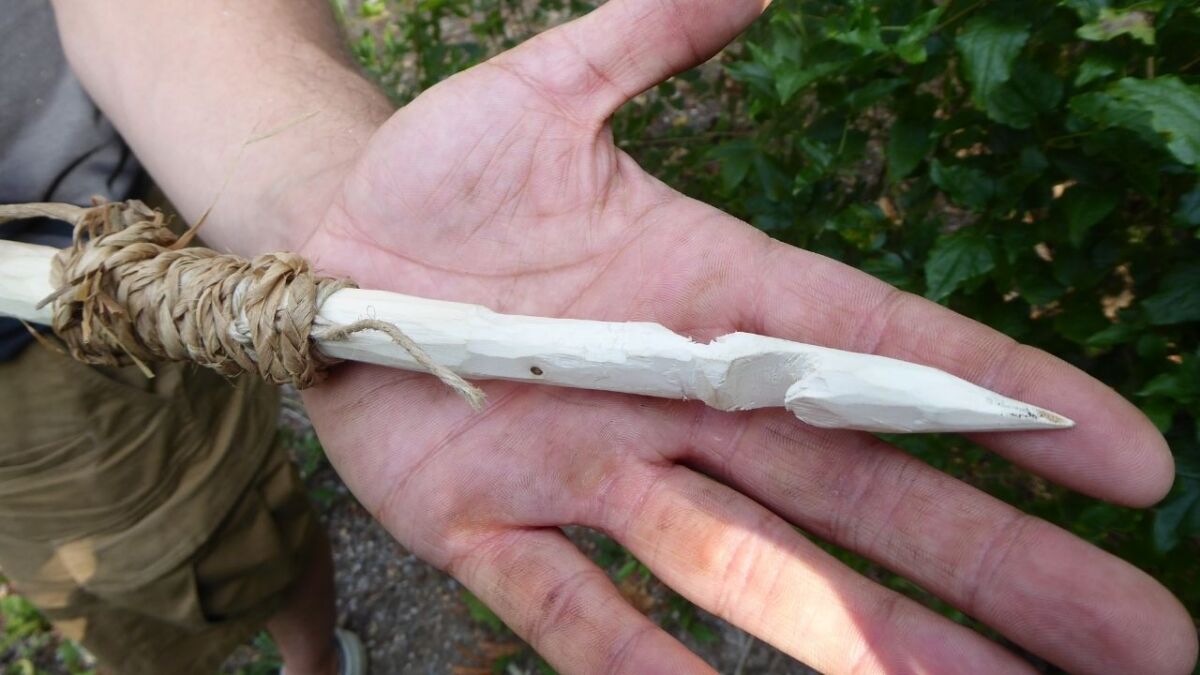
Carving Ideas: 6 Beginner Projects for Kids
-
Barking: First exercise in handling the knife, teaches caution and control
-
Butter Knife: Simple and useful, be proud of a self-made tool
-
Digging Stick: Encourages playfulness and imagination, simple shape for practice
-
Plow: For creative outdoor play, teaches shaping wood
-
Wooden Saw Sword: Fun and promotes fine motor skills, practices various carving techniques
-
Wooden Mushroom: Develops artistic skills, teaches working with curves
Tip: Follow safety rules for all projects and adjust tasks to the age and abilities of the children.

If you need more ideas, get more carving ideas in my e-book.
Common Mistakes in Wood Selection: What Beginners Should Avoid
As a carving beginner, it's easy to fall into some traps. Here are the most common mistakes I've observed in my years as a wilderness mentor and how you can avoid them:
1. Choosing wood that is too hard
The mistake: Many beginners instinctively reach for hard wood like oak or beech because they think it is "higher quality".
The solution: Start with soft woods like basswood or poplar. They are easier to work with and are gentler on your hands and tools.
2. Using wet or green wood
The mistake: Freshly cut wood is tempting due to its softness, but it will shrink and crack as it dries.
The solution: Use well-dried wood. It should feel dry and produce a bright sound when you strike two pieces together.
3. Choose wood with many knots
The mistake: Branches look interesting, but they are difficult for beginners to work with and can damage your tools.
The solution: Look for wood that is as knot-free as possible, especially for your first projects.
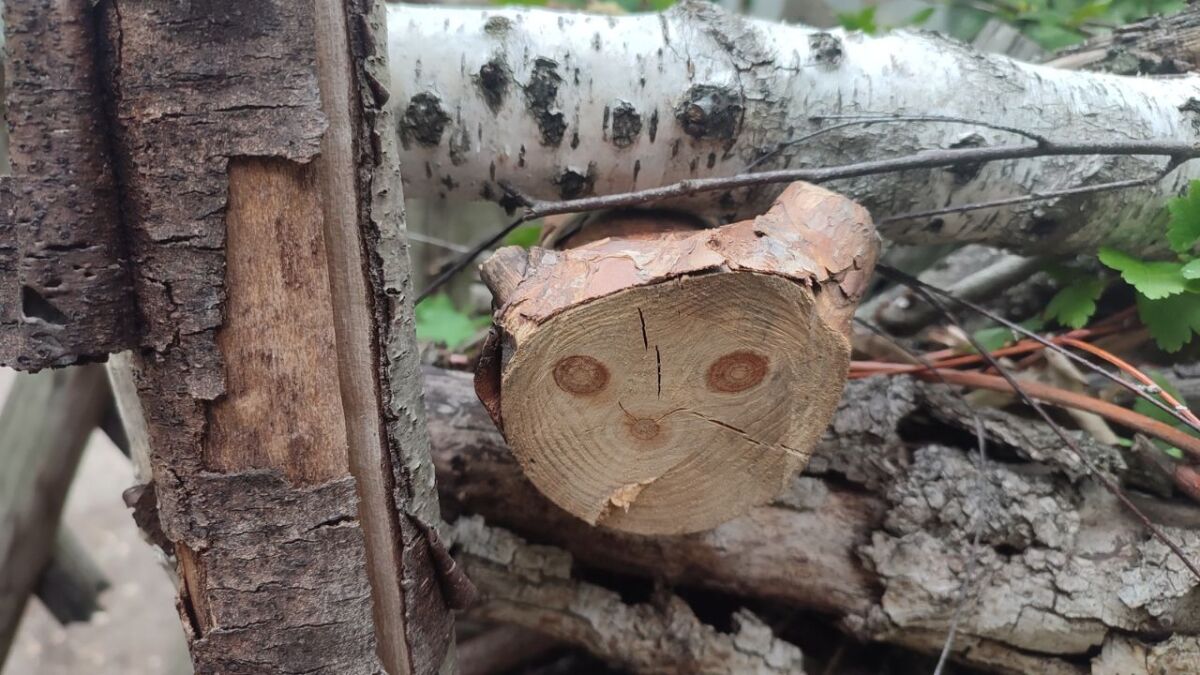
4. Ignoring the grain
The mistake: Carving against the grain leads to tear-outs and uneven surfaces.
The solution: Pay attention to the grain and carve in its direction. With wavy grain, work from both sides towards the center.
5. Choosing pieces that are too small or too large
The mistake: Pieces that are too small offer little room for error, while pieces that are too large often overwhelm beginners.
The solution: Start with medium-sized pieces that fit perfectly in your hand. For initial projects, pieces that are 10–15 cm long are usually sufficient.
6. Prefer exotic woods
The mistake: Expensive, exotic woods lure with their beauty, but are typically difficult to work with.
The solution: Focus on native woods. They are cheaper, easier to obtain, and often more beginner-friendly.
7. Underestimating the quality of the wood
The mistake: Cheap, low-quality wood can be frustrating and yield poor results.
The solution: Invest in high-quality carving wood from reputable dealers or carpentries.
8. Ignoring allergies
The mistake: Some woods (like yew) can cause allergic reactions, especially if you are sensitive.
The solution: Inform yourself about possible allergens in different types of wood and carefully test how you react to wood dust.
By avoiding these common mistakes, your entry into carving will be much more pleasant and successful. Remember: Every mistake is an opportunity to learn.
So don't be discouraged if everything doesn't work out perfectly right away. With time and practice, you will develop a sense of which wood is best suited for which project.
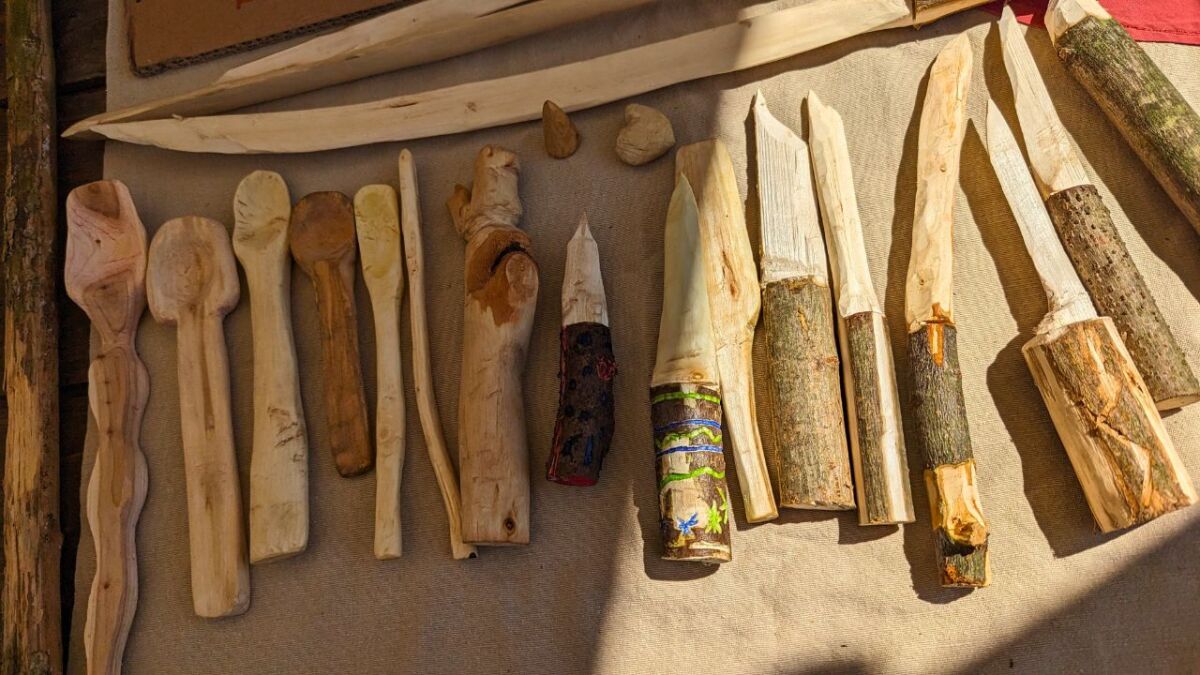
Your Path to Carving: Summary and Next Steps
Fact is: Choosing the right wood is essential for carving. For beginners, soft woods like lime or poplar are great. They are easy to work with and perfect for starting out.
The more you carve, the more you can venture into harder types of wood. Each wood has its characteristics. This makes carving exciting.
My tip: Choose the right wood and use high-quality tools. Pay attention to safe techniques. This way, you will make quick progress and soon be able to tackle creative projects.
Have fun discovering this fascinating craftsmanship!


Author of the guide
Martin Gebhardt
Hey, I'm Martin. On my blog, you will learn the basics and numerous details about living in the wild. I think survival, bushcraft and the good life in nature are the keys to happiness. Find me here on Instagram or on YouTube. You can find more about my mission on the About Me page.
Was this guide helpful?
23 people found this guide helpful.
5.00 out of 5 points (23 Ratings)
Comments (0)
This post may contain affiliate links. So if you click on the links and make a purchase, I will receive a small commission at no additional cost to you. Click here, to learn more about it.



